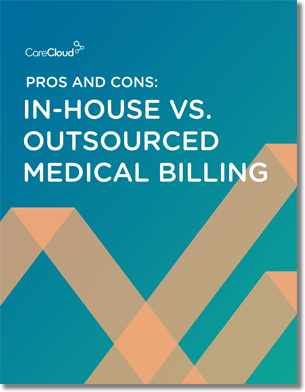Medical billing is complex in any area of medicine. In anesthesiology, the challenges remain the same. Medical billing is responsible for much more than the finances of your practice. If your practice is generating healthy revenue, you can hire more staff, ultimately improving the quality of the services you provide. Errors in your medical billing process will often cause claim denials, delayed payments, and loss of revenue.Thus, it is important to maintain all aspects of medical billing in your anesthesiology practice. This means keeping accurate and complete documentation to avoid any issues in claim submission and training your staff and practitioners about the document requirements and healthy practices. However, that is not enough. In this article, we will walk you through the ins and outs of anesthesia billing and how you can improve medical billing in your anesthesiology practices.
How Anesthesia Billing is Done
Medical billing in anesthesiology can differ slightly from regular practices. Anesthesia billing depends on a few factors, such as time, complexity of the procedure, and modifiers. It generally uses a formula to calculate charges.
Charge = (Base units + Time units + Modifying Units) x Conversion Factor
According to this formula, your charge depends on four crucial factors:
Base Units
The base unit is the unique code assigned to each procedure. Difficult and more complex procedures often have a higher base unit.
Time Units
A time unit can vary depending on location but is normally 15 minutes long.
Modifying Units
Modifying units encompass emergencies or unique conditions in a patient’s health.
Conversion Factor
The conversion factor is the cost assigned to each unit. This varies according to the provider’s location.
Now let us go over the factors affecting anesthesia billing:
Time
Time is essential in anesthesiology. Thus, for billing purposes, it is further broken down for precision.
Start Time
The start time indicates the start of the procedure. This also includes the time an anesthesiologist takes to prepare the patient for services such as pre-anesthesia sedation, placement of monitors, etc. However, it does not include the time taken during patient intake, reviewing medical history, or other time before the procedure.
Stop Time
Stop time is when the anesthesia procedure ends. This is when the patient is admitted to the Post-Anesthesia Care Unit (PACU) and the care is transferred to another specialist. PACU time is billed until the patient is successfully transferred into post-anesthesia care. It is important to document this time for billing purposes.
Discontinuous Time
Discontinuous time includes any time between IV placement and surgery or the provision of relief between switching providers. This time must be written in exact hours and minutes. The post-evaluation period is not considered billable time. It is better not to count discontinuous time for broken medical direction, relief issues, or when the anesthesiologist leaves in the middle of a case.
Modifiers
Modifiers are two-character codes used to modify payments or identify details on a claim. Billers are usually aware of the common modifiers and their appropriate use. Modifiers help avoid duplicate claims or cases of unbundling. They help increase accuracy in reimbursements and make the claim submission process faster.
Improving Anesthesia Billing
Now that you have an idea about how bills are calculated in anesthesia, we will go over the steps that will help improve your anesthesia billing:
Complete and Accurate Documentation
The most important thing you need for billing is accurate and complete documentation. If your documentation is missing any critical patient health data, anesthesia time duration, or procedure complexity, it will result in your claim being rejected.
Leveraging Technology
In this digital age, technology is helping all aspects of healthcare. Adopting medical billing software will help improve your medical billing process. The right technology will help automate your tasks, track claims, manage denials, reduce workload, and generate reports. This will simplify your entire billing cycle.
Training
Apart from choosing efficient software, you also need a reliable and skilled team to handle processes. As the regulations in healthcare change constantly, you also need to provide ongoing training for your staff about the latest anesthesia billing trends to manage billing processes.
Regular Audits
Regular audits help you identify gaps in your strategy and improvise accordingly. Having an audit team will help you keep an eye on your billing process while getting external audits done can offer a new perspective.
Improved Communication
Regular communication among staff and billers helps avoid any discrepancies and addresses any issues that may arise in the medical billing and coding process.
Outsourcing Anesthesia Billing Services
Outsourcing medical billing is one of the most critical decisions you will ever make for your practice. This will help you avoid any errors and ensure timely payments. Outsourcing your billing to professionals like CareCloud will give you peace of mind that your claims will not be denied, and your reimbursements will increase. CareCloud’s team has extensive experience in medical billing and coding, denial management, audits, and compliance expertise, all of which help you take your medical billing to the next level.
Conclusion
Navigating through the complex world of medical billing can be challenging. Fortunately, we have your back. Our team has in-depth knowledge of anesthesia coding and billing and will help ensure your practice’s financial health stays healthy. At the same time, you can focus on delivering quality patient care.



